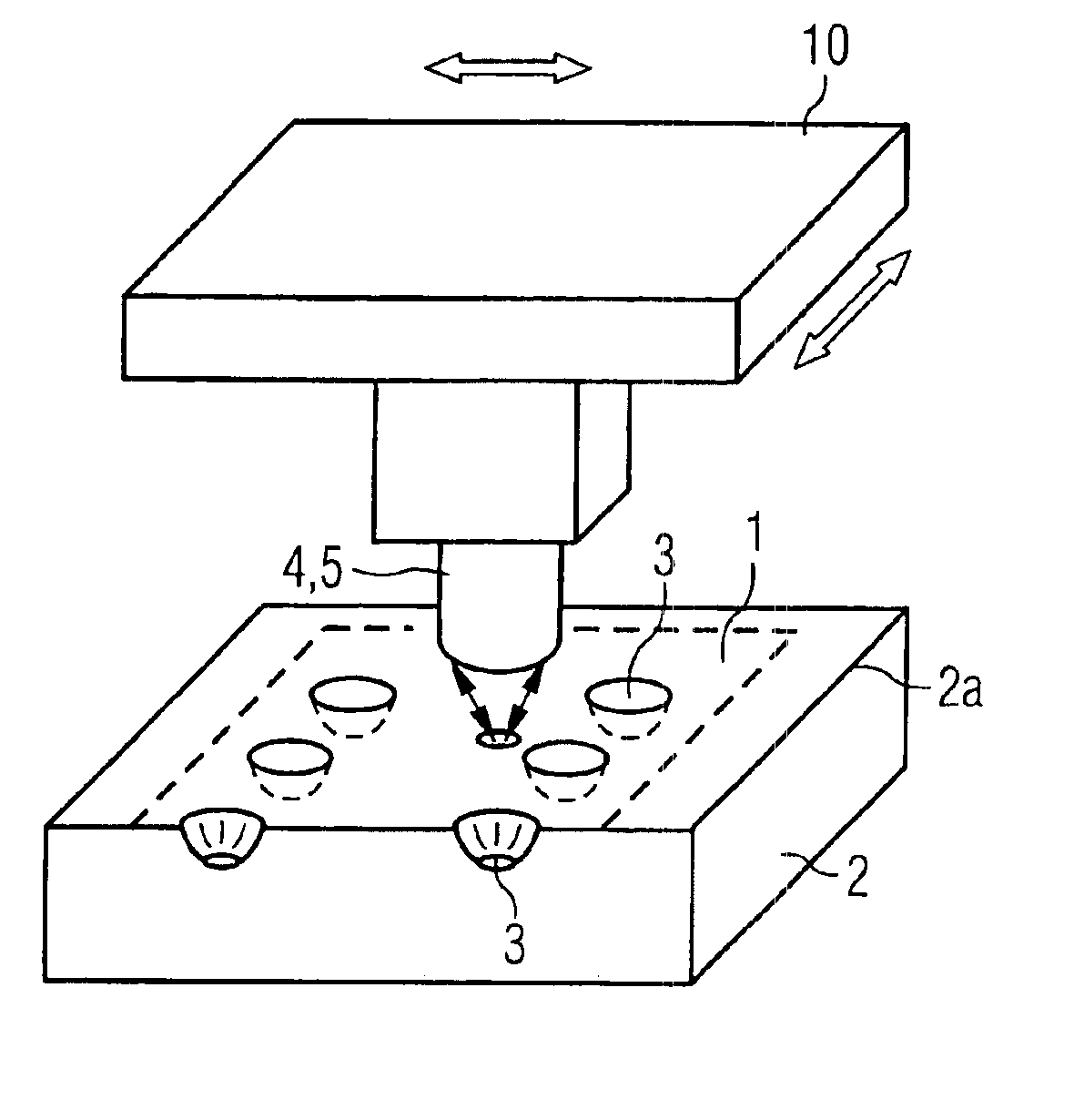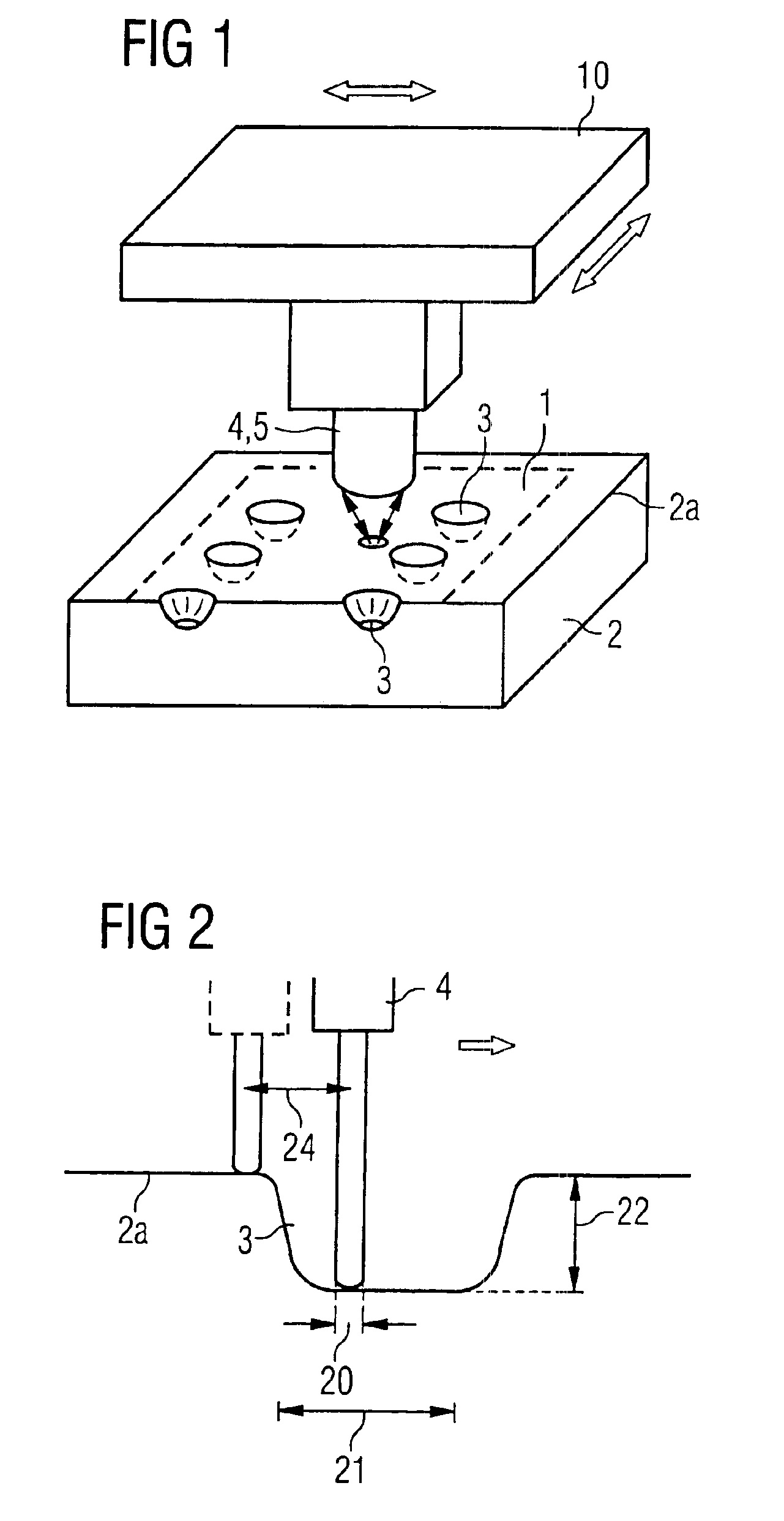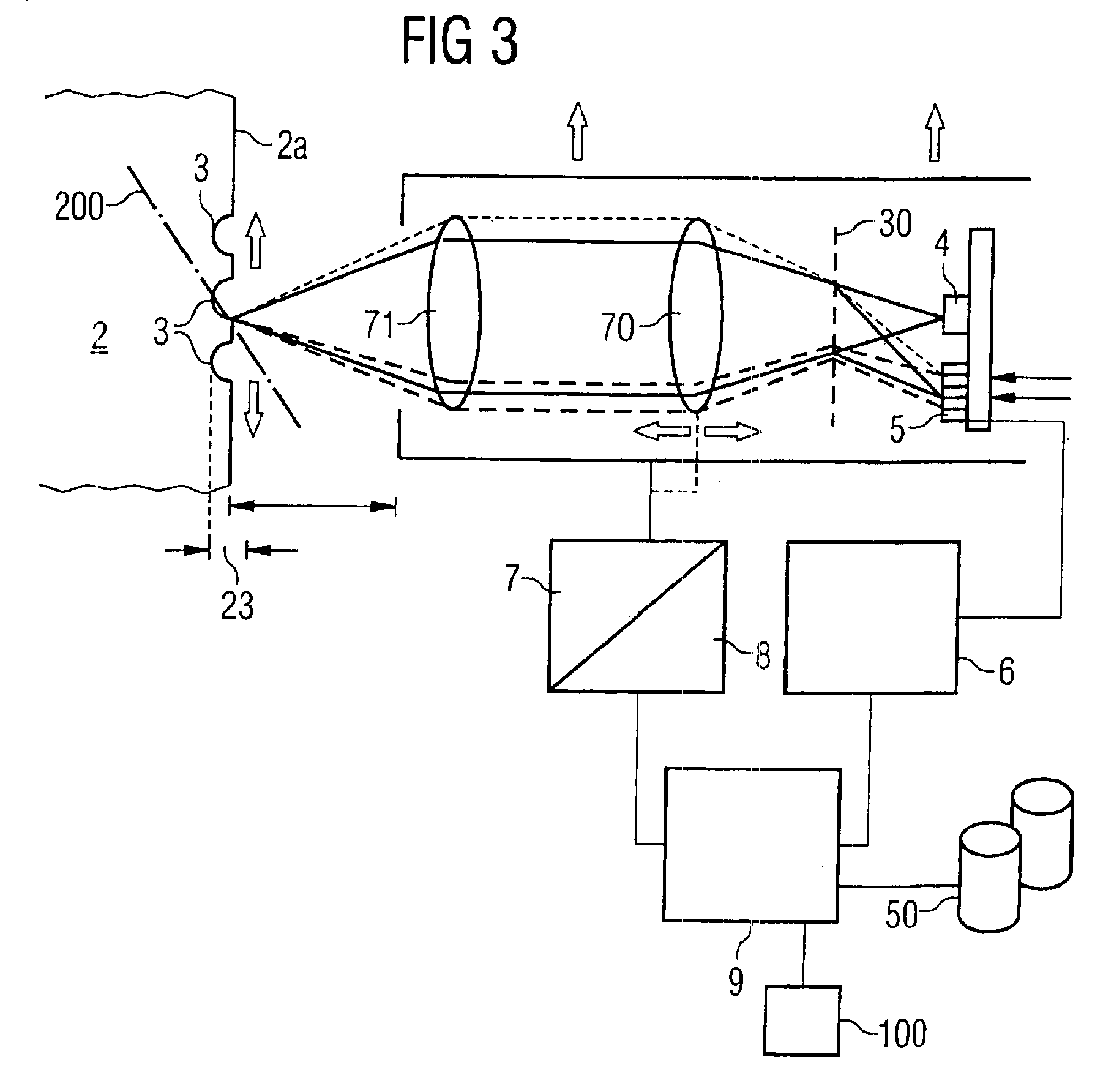Semiconductor device identification apparatus
a technology of device identification and identification apparatus, which is applied in the direction of electrical apparatus, instruments, and sensing record carriers, can solve the problems of inefficient scattering approach, reducing color contrast, and using a ccd-camera, and achieves high image pattern contrast and reduces erroneous reading of device identification patterns
- Summary
- Abstract
- Description
- Claims
- Application Information
AI Technical Summary
Benefits of technology
Problems solved by technology
Method used
Image
Examples
Embodiment Construction
The source of radiation 4, which can be a laser, and a sensor 5 can be mounted on a stage 10, as shown in FIG. 1. The stage 10 can provide a scanning movement in both x- and y-direction at a constant height level above a semiconductor device 2 having a surface 2a, on which an identification pattern 1 is structured by an arrangement of laser-engraved holes 3. The semiconductor device 2, according to this embodiment, can be a semiconductor wafer and the surface 2a can be the wafer backside surface, and the identification pattern 1 is to be read out for performing an identification in, e.g., a sorter or another semiconductor processing tool.
A side view of the scanning procedure is shown in FIG. 2. For illustrating the distance measurement, a cut is performed through the position of a hole 3 being engraved into the surface 2a. Two scanning steps having a scanning pitch 24, e.g., the horizontal distance between two laser beams, can be visualized in FIG. 2. The source of radiation, i.e., ...
PUM
 Login to View More
Login to View More Abstract
Description
Claims
Application Information
 Login to View More
Login to View More - R&D
- Intellectual Property
- Life Sciences
- Materials
- Tech Scout
- Unparalleled Data Quality
- Higher Quality Content
- 60% Fewer Hallucinations
Browse by: Latest US Patents, China's latest patents, Technical Efficacy Thesaurus, Application Domain, Technology Topic, Popular Technical Reports.
© 2025 PatSnap. All rights reserved.Legal|Privacy policy|Modern Slavery Act Transparency Statement|Sitemap|About US| Contact US: help@patsnap.com



